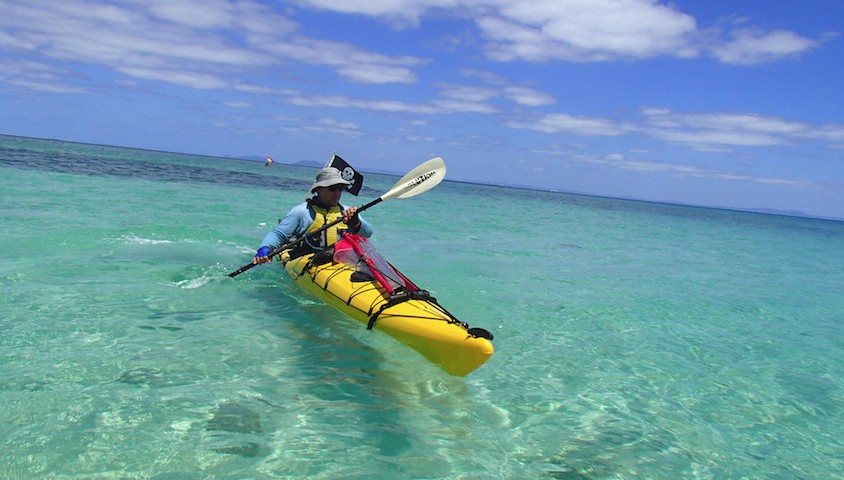Gone for Shore: A Sea-kayaking Guide to Northern Queensland
by Tim Trehearn (Self-published, $24.95)
Author Tim Trehearn and his wife first developed their passion for sea kayaking in 1984 while working for Outward Bound in Scotland. When they returned to Australia, there weren’t many other paddlers (they owned the third and fourth kayaks built by renowned owner of Rosco Canoes and Kayaks, Ross Cook) and they subsequently became pioneers of the sport in North Queensland. The in-depth knowledge of the region that Trehearn has developed since then is evident in this well considered and logically presented guidebook, making the book a valuable resource for anyone planning a kayaking trip up north.
As noted in the introduction, Gone for Shore: A Sea-kayaking Guide to Northern Queensland isn’t intended as a guide on how to kayak, so if that’s what you’re after, you’ll need to look elsewhere (but not far – there’s plenty of literature and ‘how to’ videos out there, some of which are listed at the back of this book). Instead, the book seeks to provide the all-important local knowledge that Trehearn has learned is crucial for a safe and successful adventure.
With this in mind, it’s not surprising that the first part of the book – which is broken into three sections – addresses matters specific to North Queensland: it includes the types of things that folks from other parts of the country, or globe, may not be familiar with. Titled ‘Preparations and considerations for northern Queensland’, this section contains, among other things, advice on how to identify the various jellyfish and treat their stings (think box jellyfish and irukandji), tips on tide and weather, and considerations on kayaking with crocodiles.
The following two sections get into the real detail. They divide North Queensland’s possible kayaking routes into those from ‘Townsville to Cooktown’, which you can plan as short trips or link to create a longer journey, and those around ‘The Whitsundays’, which tend to be loop trips (although there’s also the option of paddling onto Bowen).
The content provided for each of the routes varies, but often includes maps, notes on distance and prominent weather patterns, estimates of paddle times, and tips on camping (with considerations for shade and water availability, because we love shade and water in those sunny parts). The book also includes advice specific to a site that Trehearn thinks you should know about; for example, whether you’re likely to be shot at. Yes, shot at.
It’s not all about the kayaking though. The countless photos will entice you and Trehearm has interspersed all sorts of anecdotes of local fisherman, drug raids, leper colonies, environmental protests, and Aboriginal cave shelters throughout the book to make sure you don’t miss out on any of the local history, cultural significance, or sightseeing musts. Due to the commercial nature of the Whitsundays, Tim has also provided some information on transport, accommodation and kayak hire for the area.
The contents, index (including lists of maps), and colour coding for each section will ensure you navigate the book easily and find the information you’re after readily. At the back you’ll also find suggested reading (that can provide the more general ‘how to’ information), a key to the map symbols and the contacts you need when planning your sea kayaking adventure.
When I received this book I had been thinking of making North Queensland the destination of my next road trip. This book has confirmed that that will indeed be the case and that I will indeed be taking my kayak with me. If you’re thinking of heading in the same direction, then it will be worth your while to grab a copy.



